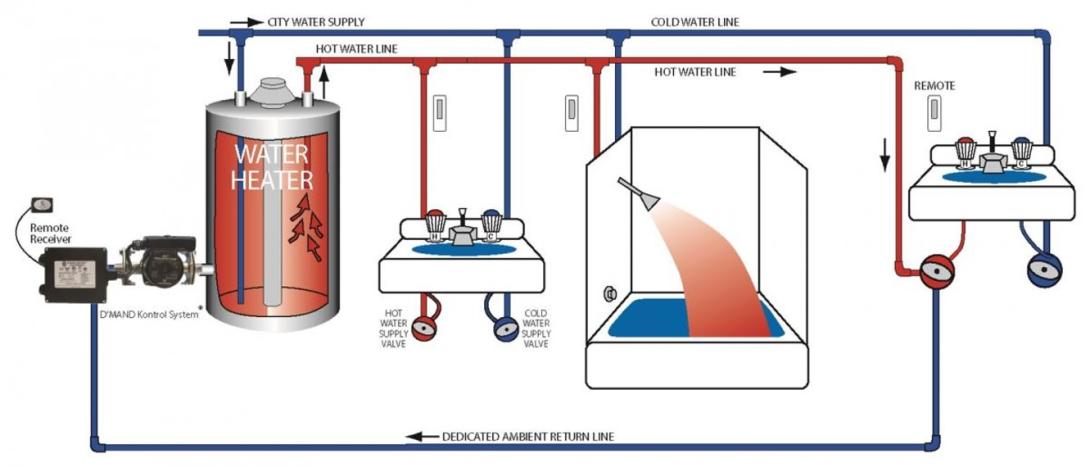
Plumbing
Hot Water Recirc On Demand
Demand plumbing is another alternative to the trunk-and-branch layout and its problems, like wasted water. It involves designing a compact plumbing distribution system, using a recirculation line, and placing short “branches” to each hot water fixture.
Recirculating systems save time and deliver hot water to faucets quickly, adding convenience for the homeowner. They also conserve water. Currently, between 400 billion and 1.3 trillion gallons of water are wasted in US households per year while waiting for water to heat up. What’s more, these systems limit municipal energy waste. 800 to 1,600 kilowatt-hours per year are used to treat and pump the water to households that will eventually be wasted while the occupant waits for tap water to heat.
Here, a circulation loop brings the supply portion of the loop close to each fixture or appliance. The best way to operate the pump is to use demand-initiated controls. A circulating pump draws hot water through the supply portion of the loop and returns any ambient-temperature water left sitting within the loop to the water heater. Ideally, the circulation loop should be placed where it can be kept as short as possible and within 10 feet of every fixture.